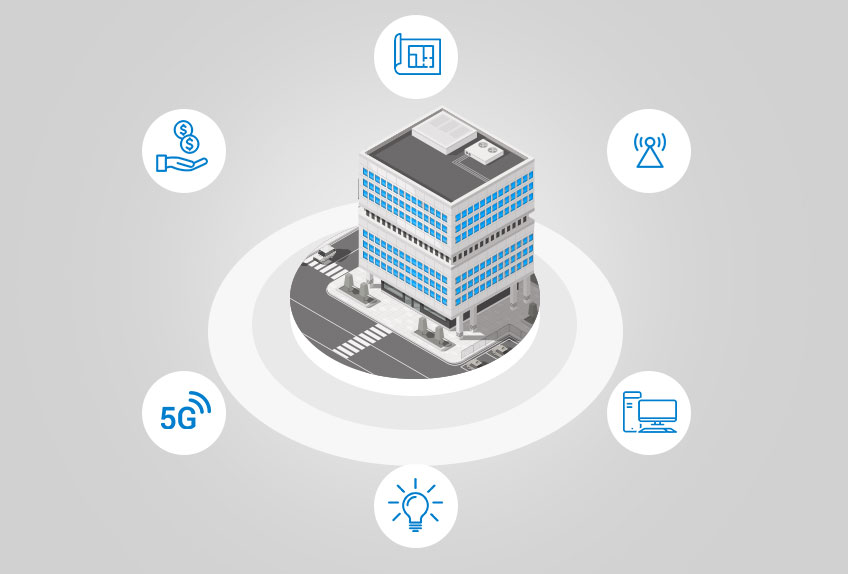Ready to upgrade your in-building connectivity? There are a lot of factors to consider while choosing which route you want to take for your in-building solution. Not only do building materials affect indoor connectivity but there’s a huge array of options for you to choose from including Distributed Antenna Systems (DAS) and small cell solutions. So we’ve written this blog so you can make a more informed choice before committing the big bucks. Here’s what you must factor in while choosing an in-building connectivity solution.
- Space Available – This includes factors such as occupancy, footfall, public areas, physical layout, and more. You should also factor in any outdoor areas such as accessible rooftops. Some solutions also require considerable space inside the building to install equipment and antennas. You can make this step a little easier by creating accurate blueprints and floor drawings. These can be used by network engineers to come up with a specific solution for your space.
- How Many Operators Are Needed? – Do your tenants have a single operator (think company-issued mobile devices) or do they need multiple operators. Small cell technology generally allows for one or two operators but DAS solutions are going to be easier to implement in a multi-operator setup. In most cases for in-building connectivity solutions, we recommend DAS solutions owing to their general-purpose benefits that can aid everyone on the premises.
- Budget and Component Cost – In-building solutions and the necessary components aren’t cheap which is why is critical to have a budget set aside for them. Additionally, each solution type (DAS or Small Cell) has its own cost of implementation that varies greatly depending on the size and density of your solution. In most cases, small cell solutions using a combination of repeaters and amplifiers are cheaper; however, there are several restrictions when compared with DAS. You can also use both DAS and small cell solutions in tandem to create a custom-fit in-building connectivity solution that works best for your space.
- Capacity – Another critical aspect to consider while choosing in-building connectivity solutions are the number of connected devices available within the building. Small cell solutions are generally preferred for fewer devices as these can at most connect with 20-25 devices. But if there are more devices you might want to consider DAS solutions as they connect with a larger amount of devices.
- Future Proof – Some solutions lend themselves better to upgrade and innovations. Considering the advent of 5G and an increase in connected devices, it’s best to make sure your in-building connectivity solution stands the test of time.
Upgrading your in-building connectivity is no small task and as such it’s best to make an informed decision, which is where we come in. Kaytech Coverage has a proven track record of improving in-building connectivity and our team of expert engineers and planners will help you choose the perfect solution that meets all your spatial and budgetary requirements. In case you’d like to know more about these solutions, we’ve written detailed articles about them. To know more about DAS Solutions, read our piece on ‘Methodology for Designing Best-In-Class In-Building DAS’; for small cell knowledge, here’s an explainer guide to small cell technology. Write to us at sales@ktcoverage.com for a free consultation.


